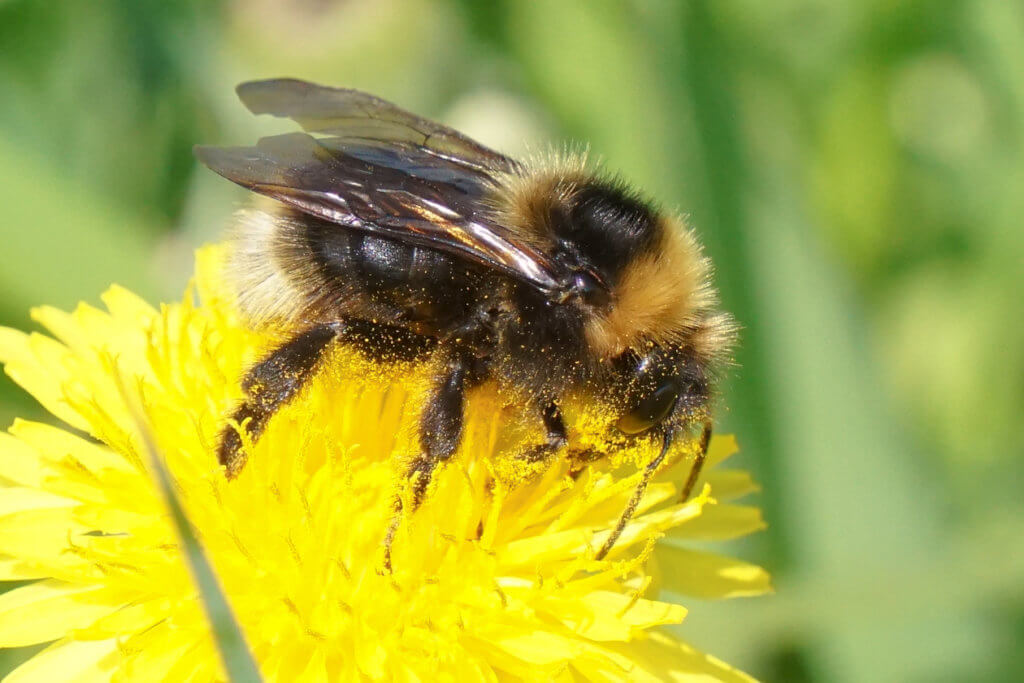
Paul writes: Searching for insects is a bit like birding. I have a home patch, life list, year list, etc. I even get to look for Cuckoos. So it was great when I found this bumblebee last week. A lifer on my home patch! It’s a good record as well. Barbut’s Cuckoo Bee (Bombus barbutellus) is recorded mostly in Southern England, not often near the Yorkshire Coast. My home patch is the 1km OS square TA0978, which consists of my garden, two field paths and a stretch of, not too busy, main road with hedgerows either side. Nothing special but it turns up a good variety of insects.
Cuckoo bumblebees behave like the birds, by taking over the nests of other bumblebees. Most bumblebee species have a cuckoo to contend with. Barbut’s Cuckoo Bee resembles the Garden Bumblebee (Bombus hortorum) and uses this to its advantage. The cuckoo will hang around a suitable flowerbed looking for the right bee, then follow it home to the nest. She then enters the nest and once inside will find and kill the existing queen bumblebee, then take over. She will lay her own eggs and once they hatch let the existing workers feed the larvae and raise a new generation of cuckoos.
A good way to spot a queen cuckoo bee in spring is by her behaviour. Bumblebees are normally very industrious and are seen constantly flying from flower to flower collecting pollen and drinking nectar. If you see a bumblebee, which perches on a flower amidst other bees and doesn’t move around for a while, there is a good chance that it is a queen cuckoo. Another pointer is that they usually have very dark wings.
[registration_form]